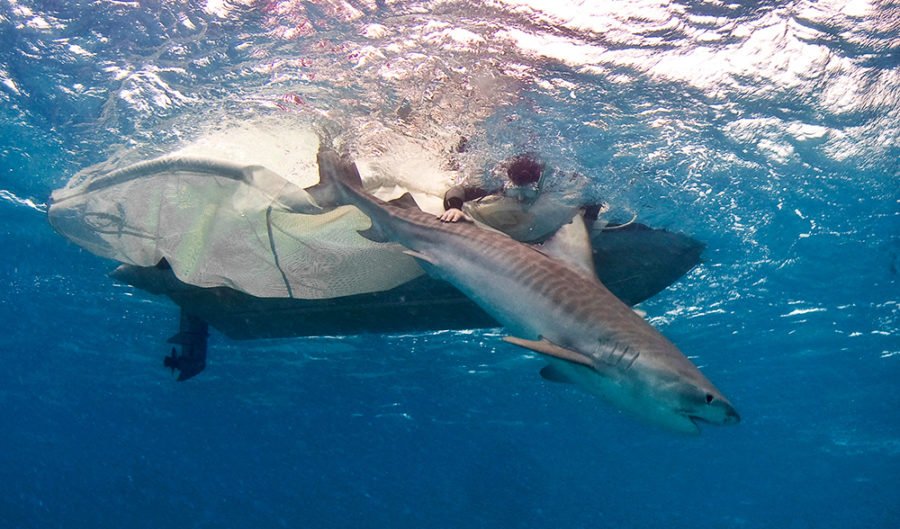Tiger shark movements mapped

A FOUR-YEAR SURVEY of tiger shark migration across the south-west Pacific has found new areas important to their ecology.
Tiger sharks (Galeocerdo cuvier) often prefer the open ocean to protected coastal reefs, making them more vulnerable to hunting, according to the study in PLoS ONE.
In particular, isolated oceanic Chesterfield Reef – 1000km from the Queensland coast in the Coral Sea and outside protected waters – is a significant tiger shark habitat, says shark scientist Dr Jonathan Werry from Griffith University, Queensland, who led the joint project with the French government.
Marine Protected Areas dotted largely around the coastlines may offer only brief windows of protection for these wide-ranging predators, the study suggests.
“Now that we see these areas are connected, if we want to protect tiger sharks, we need to focus on oceanic [rather than just coastal] reefs,” Jonathan says.
Tiger shark migration varies greatly
The team tagged 33 adult tiger sharks across the south-west Pacific Ocean, between the French territory of New Caledonia and the Great Barrier Reef, with satellite and acoustic transmitters. Between 2009 and 2013, the movements of these animals were monitored with receivers situated along the coast of Queensland, in New Caledonia, and on the Chesterfield and Lord Howe islands.
“Most studies have focused on a single location,” Jonathan says. “[But] by providing six different study sites we were able to get a grasp on the population and its movements.”
The team were surprised to find that tiger sharks do not have a consistent seasonal migration route. Patterns of migration, in fact, vary greatly between individuals, with some travelling widely over distance of thousands of kilometres, while others stay in the same spot for more than a year.
Tiger sharks: apex predators of the Coral Sea
The study also revealed that age and gender determine some of the variation, with females of reproductive age travelling most extensively.
“Female sharks are the primary custodians of migration across the Coral Sea, and having pups every three years is probably what drives this,” Jonathan told Australian Geographic.
Outside of protected areas, tiger sharks are extensively harvested for their fins and skin, and also their livers, which contain high levels of vitamin A. These sharks have an average lifespan of 50 years and reproduce slowly, making them particularly vulnerable to population decline.
“Large sharks act like a barometer reflecting the health of the food chain. In the Coral Sea tiger sharks are apex predators so they regulate the health of the [ocean] ecology.”

